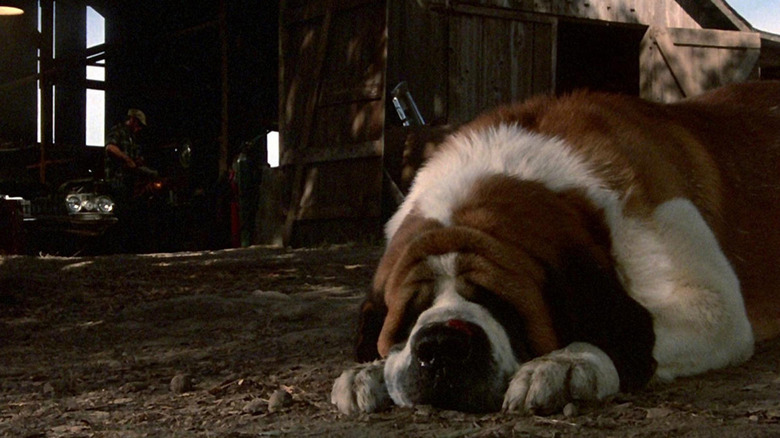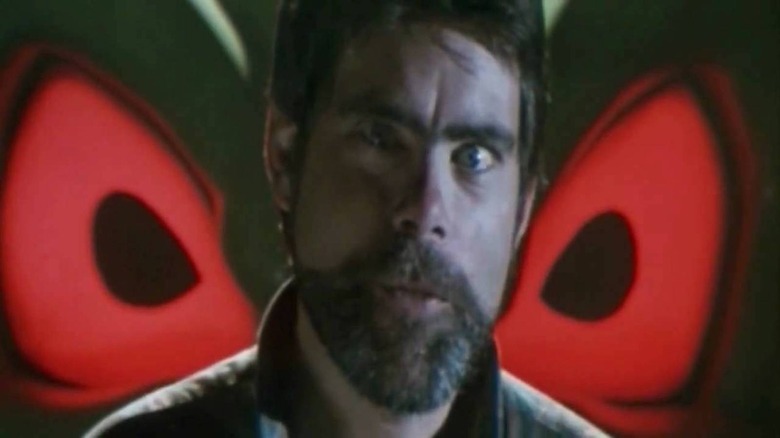The Real Dog Attack That Inspired Stephen King's Cujo
We may receive a commission on purchases made from links.
Stephen King has been a one-man fear-exploiting factory since the Nixon administration. He just celebrated the 50th publication anniversary of "Carrie" last April, and released a new collection of short stories, "You Like It Darker" a month ago. The 76-year-old author shows no signs of slowing down, and if you ask his legion of fans, they'll tell you that, while he's had his peaks and lulls, there's been no sustained fall-off in quality throughout his career. You might not spark to all of his books, but sooner or later the King of Horror will once again scare the holy hell out of you.
While some of his stories dredge up universal dreads like the end of the world ("The Stand"), the boogeyman (take your pick, but it's hard to top terrifyingly relatable breadth of "It") and s***-weasels ("Dreamcatcher"), he's got a knack for training his macabre sights on a specific phobias. It's hard to think of a writer who could mine a Plymouth Fury to bloodcurdling, page-turning effect as King does in "Christine," and the man basically put pyrokinesis on the map with his 1980 bestseller "Firestarter." There's a King book that hits close to home for everyone, but two books that stand out in a major way for many readers are "Pet Sematary" and "Cujo." Because we love our pets, and it's both horrifying and heartbreaking to imagine them turning on us.
"Cujo" is a masterfully crafted, double-edged yarn in that, as much as most of us adore pups, we've likely had a brush with at least one unfriendly cur. Whether they're the product of abuse or have an inherently nasty disposition, a ticked-off dog can be a terrifying thing. So it's hardly surprising to learn that King was mining his own fear when he put "Cujo" down on paper.
How Bowser begat Cujo
According to Bev Vincent's "The Stephen King Ultimate Companion: A Complete Exploration of His Work, Life and Influences," "Cujo" literally sprung into King's life when a 200-pound Saint Bernard had a go at the author. King's run-in occurred in 1977 when he brought his motorcycle into a garage for repairs. He came in hoping for a no-fuss fix of his vehicle; he didn't bargain for an encounter with a ferocious furball named Bowser.
According to Vincent, King asked the mechanic if Bowser was a friendly dog. Upon being told Bowser wasn't the biting type, King went to pet the apparently docile beast. Within seconds, Bowser assaulted the author.
The mechanic quickly brought his socket wrench down on Bowser, thus sparing King from a hospital visit and the joy of a tetanus shot or worse. You'd think Bowser's owner would've been incredibly contrite (especially since King was a soon-to-be-paying customer), but upon pacifying his dog the mechanic fired back, "Bowser usually doesn't do this. He must not have liked your face." (Seen above. You can decide for yourself if Bowser had a legit grievance.)
This incident seared itself into King's memory, and, four years later, inspired what currently stands (according to GoodReads and Amazon) as the writer's eighth most popular novel. I wouldn't say "Cujo" did exactly for big dogs what Peter Benchley's "Jaws" did for great white sharks (perhaps because, according to King, the film adaptation isn't a terribly effective adaptation), but that Saint Bernard is never far from my thoughts when I consider petting a pooch that could make a meal out of me.

